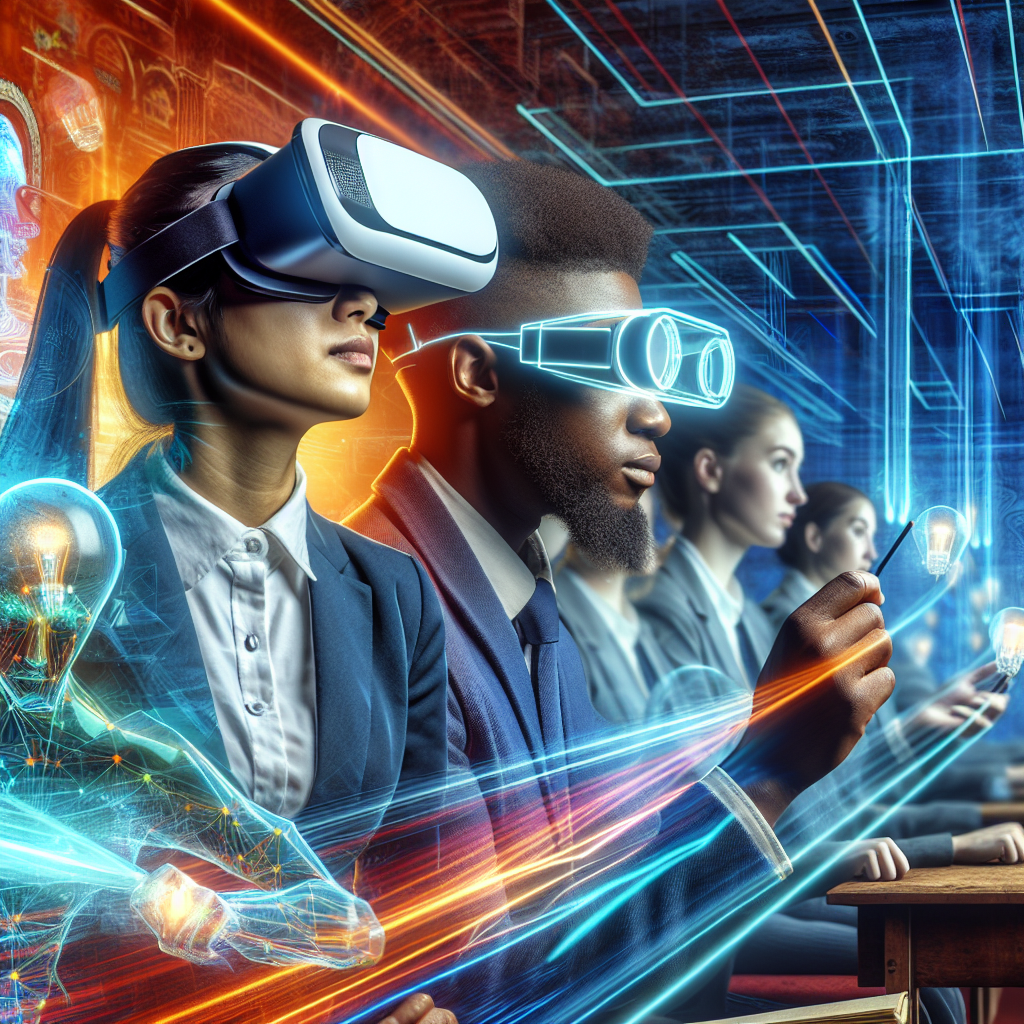Revolutionizing Training: How Virtual Reality is Transforming Learning
It’s no secret that technology is constantly shaping the way we learn and acquire new skills. From online courses to interactive tutorials, there are a myriad of options available for those seeking to expand their knowledge. But one technology that is truly revolutionizing the way we learn is virtual reality (VR).
Virtual reality offers an immersive and interactive learning experience that goes beyond traditional methods. By using VR headsets, students can be transported to different environments and scenarios, allowing them to gain hands-on experience in a safe and controlled setting. This technology is particularly useful in fields such as healthcare, aviation, and engineering, where practical training is essential but can be costly or dangerous.
One of the key benefits of VR training is its ability to engage learners on a deeper level. By simulating real-world situations, students are more likely to retain information and apply it in their day-to-day tasks. This results in a more effective and efficient learning process that can ultimately lead to better performance outcomes.
But how exactly is virtual reality transforming learning? Let’s take a closer look at some of the ways VR is revolutionizing training:
1. Enhanced Engagement: Traditional learning methods can often be boring and passive, leading to low retention rates. With VR, learners are actively engaged in the learning process through interactive simulations and gamified experiences. This not only makes learning fun and enjoyable but also motivates students to stay focused and committed to their training.
2. Realistic Scenarios: Virtual reality allows learners to practice skills in realistic scenarios that closely mimic the actual work environment. For example, medical students can perform surgeries in a virtual operating room, or pilots can practice emergency landings in a simulated cockpit. This hands-on experience helps build confidence and competence in a safe and controlled setting.
3. Cost-effective Training: Traditional training methods can be costly, especially when it comes to equipment, facilities, and travel expenses. Virtual reality eliminates many of these costs by providing a virtual environment that requires only a headset and a computer. This makes VR training accessible to a wider audience and reduces the financial burden on organizations seeking to upskill their workforce.
4. Flexibility and Accessibility: Virtual reality training can be accessed anytime and anywhere, making it convenient for learners to engage in training at their own pace. This flexibility allows students to fit training around their busy schedules and eliminates the need for physical classrooms or instructors. Additionally, VR training can be customized to meet the specific needs and learning styles of individual students.
5. Safety and Risk Mitigation: In high-risk industries such as mining, construction, and firefighting, hands-on training can be dangerous and costly. Virtual reality provides a safe and controlled environment for students to practice skills without putting themselves or others at risk. By simulating hazardous situations, learners can develop critical thinking and problem-solving skills that are essential for real-world scenarios.
FAQs:
Q: Is virtual reality training suitable for all industries?
A: While virtual reality training is particularly beneficial for industries that require hands-on experience, such as healthcare, aviation, and engineering, it can be adapted to a wide range of industries. From customer service to sales training, VR can be used to enhance learning and improve performance outcomes in various sectors.
Q: How expensive is virtual reality training?
A: The cost of implementing virtual reality training can vary depending on factors such as the complexity of the simulations, the number of users, and the quality of the hardware and software. However, the long-term benefits of VR training, such as improved retention rates and performance outcomes, often outweigh the initial investment.
Q: How can organizations integrate virtual reality training into their existing programs?
A: Organizations can partner with VR training providers to develop customized programs that align with their training goals and objectives. By leveraging the expertise of VR professionals, organizations can create engaging and effective training experiences that address the specific needs of their workforce.
Q: What are some of the challenges associated with virtual reality training?
A: While virtual reality training offers many benefits, there are some challenges to consider, such as the need for specialized equipment, technical support, and content development. Additionally, some learners may experience motion sickness or discomfort when using VR headsets, which can impact their training experience.
In conclusion, virtual reality is revolutionizing the way we learn by providing an immersive and interactive training experience that engages learners on a deeper level. By simulating real-world scenarios, VR training allows students to practice skills in a safe and controlled setting, leading to better retention rates and performance outcomes. With its flexibility, accessibility, and cost-effectiveness, virtual reality is transforming learning across a wide range of industries and setting a new standard for training programs in the digital age.
